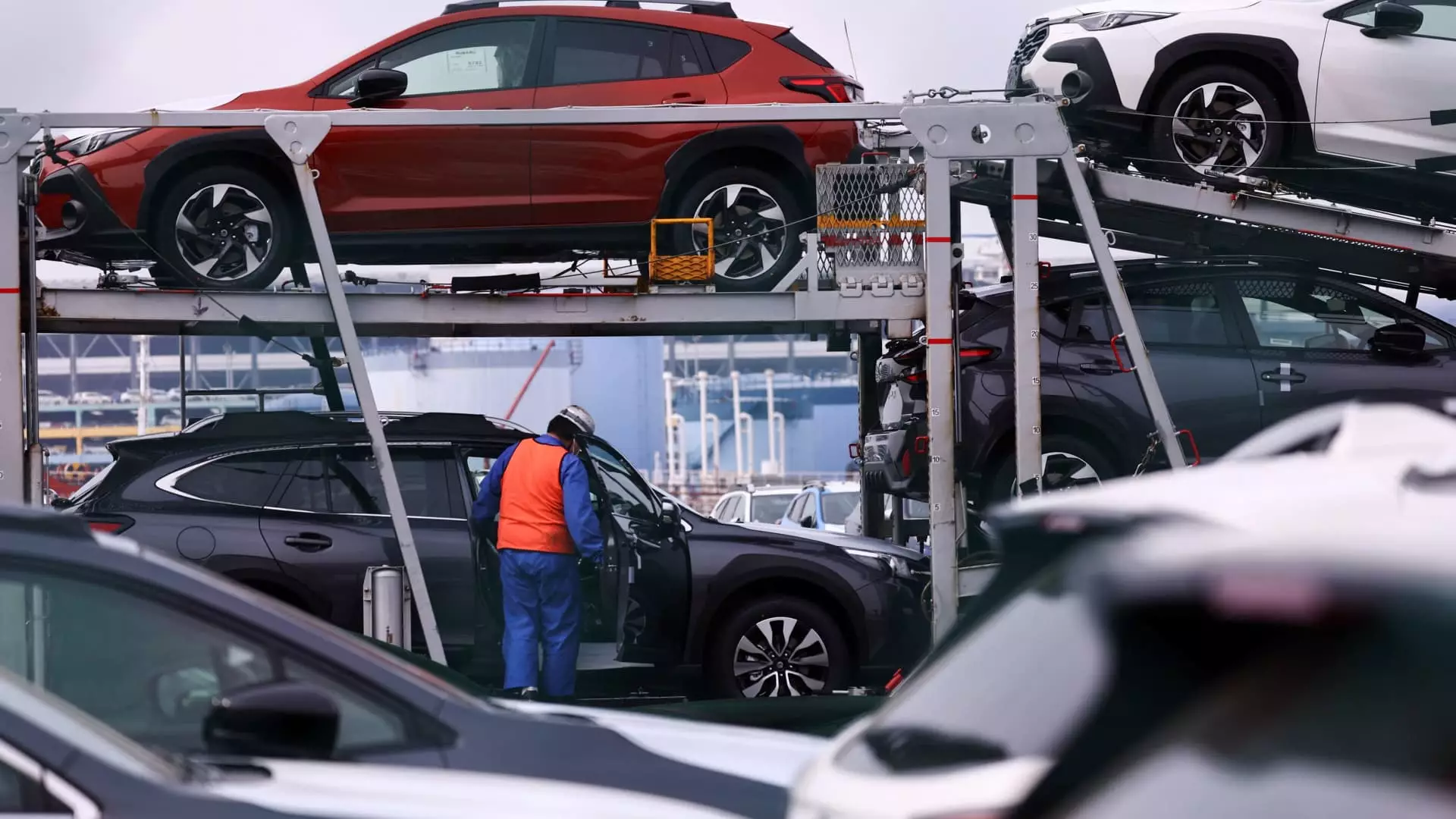On Thursday, the stock market took a downturn, mirroring the chaos that tends to accompany President Donald Trump’s trade announcements. The Dow Jones Industrial Average fell by 216 points, reflecting a 0.5% decrease, while the S&P 500 and Nasdaq Composite also slipped, losing approximately 0.3% and 0.4%, respectively. This dip is alarming not just for investors but for the average American worker whose job security is at stake as we navigate turbulent economic waters driven by erratic policies that seem to unfold like an unpredictable soap opera.
Trump’s newly proposed 25% tariffs on foreign automakers have rattled the automotive industry, leading to sharp declines in shares for companies like General Motors and Ford, which dropped 7% and 3% respectively. In stark contrast, Tesla’s stock rose by 1.5%, a curious anomaly given the overarching uncertainty. This odd split raises questions about whether Tesla’s unique standing as a domestic producer can truly insulate it from the broader consequences of these tariffs. It feels reminiscent of a feigned victory amidst a losing battle.
The Tariff Tango: A High-Stakes Game
The President’s approach towards tariffs has always felt more theatrical than strategic. Remarks made earlier in the week suggested these retaliatory tariffs on foreign cars would be “very lenient,” which leads one to wonder about the sincerity and steadiness of his decision-making. If these tariffs are indeed intended to be a bargaining chip, one can’t help but feel there is a serious lack of clarity that is hindering business and consumer confidence. It brings to mind the notion that this administration might be more focused on a show of strength rather than a coherent long-term strategy.
Economists are sounding alarms about the repercussions on the broader economy. As Sameer Samana of Wells Fargo highlighted, it’s not merely the policies at hand but the disorganized manner in which they are implemented that leads to unease. Is Trump’s administration shooting itself in the foot by creating a shaky economic environment? With various sectors becoming wary of investing due to uncertain future regulations, this administration could very well be inadvertently sabotaging its own economic growth.
Is Clarity on the Horizon?
While analysts express optimism that the upcoming weeks could bring a clearer framework for tariffs, the jittery nature of the current market warns against such complacency. Is it truly possible to consider this period a “speed bump” rather than a full-blown economic pothole? Many doubt that the mere promise of forthcoming regulations can calm the nerves of investors and consumers alike. The scattered implementation of these policies signals that we may be in for more than just a bumpy ride; we could be navigating a minefield.
The S&P 500 and Nasdaq have posted marginal gains this week, showing a mere glimmer of stability. However, these fluctuations raise critical questions about the long-term sustainability of such gains in an already volatile environment. This is not merely a matter of market statistics but rather a crucial issue that impacts daily lives. Ultimately, as long as we continue down this tumultuous path with misguided tariff policies, the detrimental ripple effects will continue to threaten both our economy and our way of life.

Leave a Reply